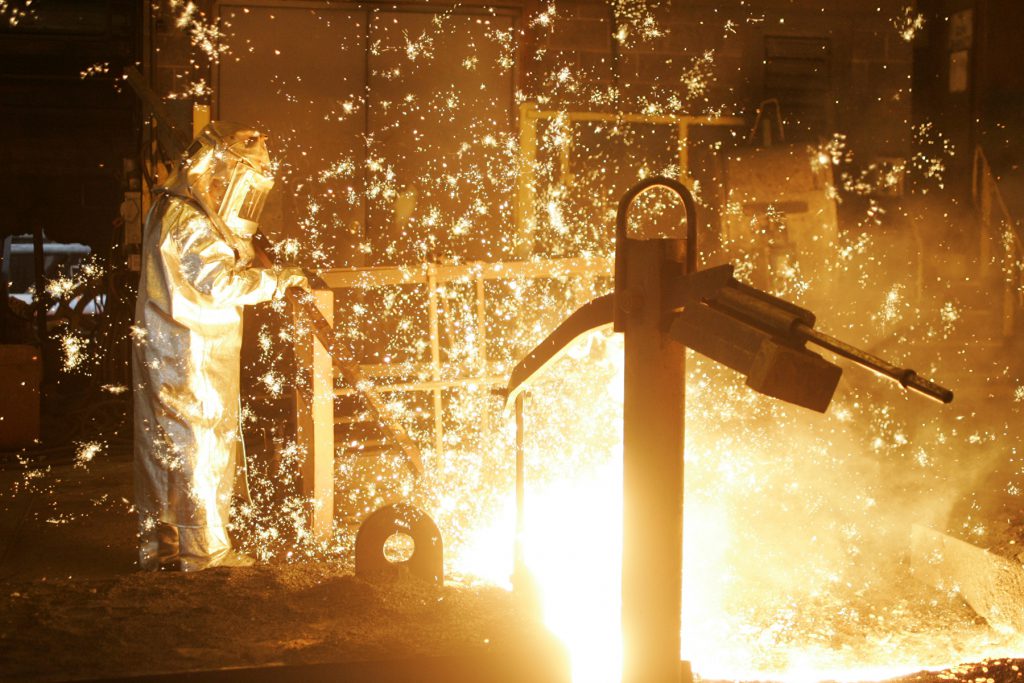
China actually saw a net increase in operating capacity, fueling the global steel glut.
Look, we can’t say we’re surprised.
A new study from Greenpeace East Asia and Custeel, a Chinese consultancy group, finds that China’s steel capacity increased in 2016, despite the country’s repeated promises to make capacity cuts. According to the study, “the vast majority” of the production capacity targeted by China was already idle, and production was started elsewhere — including at brand new facilities. Ten Chinese provinces increased their operating capacity, especially in areas near Beijing.
Only 23 million tons of operating capacity were eliminated in 2016, while 49 million tons that had been previously suspended were restarted. An additional 12 million tons were added, offsetting reduction.
That means China’s steel production capacity increased by 36.5 million tons in 2016 — and that is a major problem for the global steel industry.
China Continues to Drive a Global Crisis
Right now, the world has far more steel than it needs. It has grown to 2,300 million metric tons, while only needing 1,500 million metric tons to meet demand.
It’s pretty clear that China’s overcapacity is to blame. Seventy-five percent of new steel stock from 2000 has come from China. It has added a whopping 662 percent to its existing crude steel making capacity since 2000; it added 552 million metric tons since 2007 alone.
China cannot possibly use all that steel for its own needs. So, China sends its steel to other markets, pricing it far below fair market value. Since the vast majority of Chinese steel companies are state-owned, they don’t actually care about making a profit — they just want to get rid of the steel and keep millions of workers employed.
That’s incredibly unfair to American companies and workers, who operate in an open market and follow strict labor and environmental standards. It’s also created a global steel crisis, including here at home.
Tens of thousands of U.S. steel workers have suffered layoffs since 2015 directly because of unfair Chinese steel imports. Dozens of steel facilities have closed.
In response, the Commerce Department issued (and the International Trade Commission upheld) several rounds of anti-dumping and countervailing duties on various types of steel products from China. That helped level the playing field a bit, and some laid-off steel workers are now heading back to work.
But thousands more remain out-of-work, and while tariffs helped provide a bit of relief to American steelmakers, the overall problem remains: China is making too much steel.
That's why during the G-20 Summit in September 2016, then-President Barack Obama joined other world leaders in pressing Chinese President Xi Jinping to take action to reduce China’s steel overcapacity. Xi said China would cooperate, and the G-20 leaders even formed a new “Global Forum on Steel Excess Capacity” to address the issue further. But Xi refused to set any binding limits on steel exports, and the problem continues.
A History of Broken Promises
The Greenpeace/Custeel report shouldn’t be surprising — as the United Steelworkers noted in a recent report of their own, China has a legacy of broken promises when it comes to reducing capacity. Consider:
- In 2009, the Chinese government pledged to cut output to 460 million tons. Instead, steel production in 2009 increased to 577 million tons.
- In 2010, China’s State Council announced it would halt approval for new capacity expansion projects. By 2011, an additional 60 million tons per year of capacity had been brought online.
- In 2011, the Chinese government unveiled its newest Five Year Plan, which included a roadmap of priorities for the next five years, which included reducing steel capacity. Nonetheless, an additional 96 million tons of capacity was brought online by 2012.
- In 2013, Beijing again issued guidance calling for capacity cuts. Again, China’s steel capacity grew, this time by 70 million tons.
And now, it seems yet another promise has been broken.
While we’re focused mainly on jobs here at the Alliance for American Manufacturing, we’ll point out that an organization like Greenpeace is looking at the steel crisis from an environmental perspective.
The steel industry is the second largest emitter of air pollution in China, according to the report. It’s also the second largest consumer of coal and emitter of carbon dioxide, after the country’s power sector. That’s caused massive smog problems in the country, particularly in Beijing, and is contributing to global warming.
The U.S. steel industry, meanwhile, has reduced its greenhouse gas emissions by 36 percent since 1990, and reduced its energy intensity by 31 percent in the same period. It has the lowest energy intensity and second lowest carbon emissions intensity of any major steel producing nation.
Looking Ahead
Ideally, China will make good on its repeated promises to tackle its steel overcapacity problem and immediately take steps to genuinely reduce its steel capacity. Given the country’s history, however, we don’t expect that happen — at least not without any significant pressure from the international community.
In the meantime, the United States should continue to enforce its trade laws against unfair imports whenever warranted, including by issuing anti-dumping and countervailing duties when appropriate. In addition, the U.S. should maintain China’s status as a non-market economy.
The Trump administration and Congress also should work together to stimulate steel demand at home, including by taking action to rebuild our crumbling infrastructure and water systems. These efforts should also include Buy America preferences, which give American workers and manufacturers the first shot at completing taxpayer-funded infrastructure projects.
